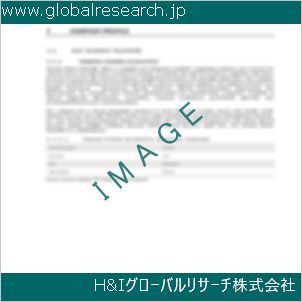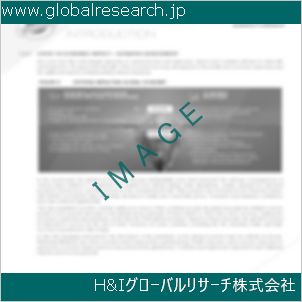Table of Contents
1 Industry Overview of Hydrogeniodide
1.1 Definition and Specifications of Hydrogeniodide
1.1.1 Definition of Hydrogeniodide
1.1.2 Specifications of Hydrogeniodide
1.2 Classification of Hydrogeniodide
1.3 Applications of Hydrogeniodide
1.3.1 Nuclear Application
1.3.2 Non-Nuclear Application
1.4 Industry Chain Structure of Hydrogeniodide
1.5 Industry Overview and Major Regions Status of Hydrogeniodide
1.5.1 Industry Overview of Hydrogeniodide
1.5.2 Global Major Regions Status of Hydrogeniodide
1.6 Industry Policy Analysis of Hydrogeniodide
1.7 Industry News Analysis of Hydrogeniodide
2 Manufacturing Cost Structure Analysis of Hydrogeniodide
2.1 Raw Material Suppliers and Price Analysis of Hydrogeniodide
2.2 Equipment Suppliers and Price Analysis of Hydrogeniodide
2.3 Labor Cost Analysis of Hydrogeniodide
2.4 Other Costs Analysis of Hydrogeniodide
2.5 Manufacturing Cost Structure Analysis of Hydrogeniodide
2.6 Manufacturing Process Analysis of Hydrogeniodide
3 Technical Data and Manufacturing Plants Analysis of Hydrogeniodide
3.1 Capacity and Commercial Production Date of Global Hydrogeniodide Major Manufacturers in 2023
3.2 Manufacturing Plants Distribution of Global Hydrogeniodide Major Manufacturers in 2023
3.3 R&D Status and Technology Source of Global Hydrogeniodide Major Manufacturers in 2023
3.4 Raw Materials Sources Analysis of Global Hydrogeniodide Major Manufacturers in 2023
4 Capacity, Production and Revenue Analysis of Hydrogeniodide by Regions, Types and Manufacturers
4.1 Global Capacity, Production and Revenue of Hydrogeniodide by Regions 2019-2024
4.2 Global and Major Regions Capacity, Production, Revenue and Growth Rate of Hydrogeniodide 2019-2024
4.3 Global Capacity, Production and Revenue of Hydrogeniodide by Types 2019-2024
4.4 Global Capacity, Production and Revenue of Hydrogeniodide by Manufacturers 2019-2024
5 Price, Cost, Gross and Gross Margin Analysis of Hydrogeniodide by Regions, Types and Manufacturers
5.1 Price, Cost, Gross and Gross Margin Analysis of Hydrogeniodide by Regions 2019-2024
5.2 Price, Cost, Gross and Gross Margin Analysis of Hydrogeniodide by Types 2019-2024
5.3 Price, Cost, Gross and Gross Margin Analysis of Hydrogeniodide by Manufacturers 2019-2024
6 Consumption Volume, Consumption Value and Sale Price Analysis of Hydrogeniodide by Regions, Types and Applications
6.1 Global Consumption Volume and Consumption Value of Hydrogeniodide by Regions 2019-2024
6.2 Global and Major Regions Consumption Volume, Consumption Value and Growth Rate of Hydrogeniodide 2019-2024
6.3 Global Consumption Volume and Consumption Value of Hydrogeniodide by Types 2019-2024
6.4 Global Consumption Volume and Consumption Value of Hydrogeniodide by Applications 2019-2024
6.5 Sale Price of Hydrogeniodide by Regions 2019-2024
6.6 Sale Price of Hydrogeniodide by Types 2019-2024
6.7 Sale Price of Hydrogeniodide by Applications 2019-2024
6.8 Market Share Analysis of Hydrogeniodide by Different Sale Price Levels
7 Supply, Import, Export and Consumption Analysis of Hydrogeniodide
7.1 Supply, Consumption and Gap of Hydrogeniodide 2019-2024
7.2 Global Capacity, Production, Price, Cost, Revenue, Supply, Import, Export and Consumption of Hydrogeniodide 2019-2024
7.3 USA Capacity, Production, Price, Cost, Revenue, Supply, Import, Export and Consumption of Hydrogeniodide 2019-2024
7.4 EU Capacity, Production, Price, Cost, Revenue, Supply, Import, Export and Consumption of Hydrogeniodide 2019-2024
7.5 China Capacity, Production, Price, Cost, Revenue, Supply, Import, Export and Consumption of Hydrogeniodide 2019-2024
7.6 Japan Capacity, Production, Price, Cost, Revenue, Supply, Import, Export and Consumption of Hydrogeniodide 2019-2024
8 Major Manufacturers Analysis of Hydrogeniodide
8.1 Manufacturer One
8.1.1 Company Profile
8.1.2 Product Picture and Specifications
8.1.2.1 Type I
8.1.2.2 Type II
8.1.2.3 Type III
8.1.3 Capacity, Production, Price, Cost, Gross and Revenue
8.1.4 Contact Information
8.2 Manufacturer Two
8.2.1 Company Profile
8.2.2 Product Picture and Specifications
8.2.2.1 Type I
8.2.2.2 Type II
8.2.2.3 Type III
8.2.3 Capacity, Production, Price, Cost, Gross and Revenue
8.2.4 Contact Information
8.3 Manufacturer Three
8.3.1 Company Profile
8.3.2 Product Picture and Specifications
8.3.2.1 Type I
8.3.2.2 Type II
8.3.2.3 Type III
8.3.3 Capacity, Production, Price, Cost, Gross and Revenue
8.3.4 Contact Information
8.4 Manufacturer Four
8.4.1 Company Profile
8.4.2 Product Picture and Specifications
8.4.2.1 Type I
8.4.2.2 Type II
8.4.2.3 Type III
8.4.3 Capacity, Production, Price, Cost, Gross and Revenue
8.4.4 Contact Information
8.5 Manufacturer Five
8.5.1 Company Profile
8.5.2 Product Picture and Specifications
8.5.2.1 Type I
8.5.2.2 Type II
8.5.2.3 Type III
8.5.3 Capacity, Production, Price, Cost, Gross and Revenue
8.5.4 Contact Information
…
9 Marketing Trader or Distributor Analysis of Hydrogeniodide
9.1 Marketing Channels Status of Hydrogeniodide
9.2 Traders or Distributors with Contact Information of Hydrogeniodide by Regions
9.3 Ex-work Price, Channel Price and End Buyer Price Analysis of Hydrogeniodide
9.4 Regional Import, Export and Trade Analysis of Hydrogeniodide
10 Industry Chain Analysis of Hydrogeniodide
10.1 Upstream Major Raw Materials Suppliers Analysis of Hydrogeniodide
10.1.1 Major Raw Materials Suppliers with Contact Information Analysis of Hydrogeniodide
10.1.2 Major Raw Materials Suppliers with Supply Volume Analysis of Hydrogeniodide by Regions
10.2 Upstream Major Equipment Suppliers Analysis of Hydrogeniodide
10.2.1 Major Equipment Suppliers with Contact Information Analysis of Hydrogeniodide
10.2.2 Major Equipment Suppliers with Product Pictures Analysis of Hydrogeniodide by Regions
10.3 Downstream Major Consumers Analysis of Hydrogeniodide
10.3.1 Major Consumers with Contact Information Analysis of Hydrogeniodide
10.3.2 Major Consumers with Consumption Volume Analysis of Hydrogeniodide by Regions
10.4 Supply Chain Relationship Analysis of Hydrogeniodide
11 Development Trend of Analysis of Hydrogeniodide
11.1 Capacity, Production and Revenue Forecast of Hydrogeniodide by Regions and Types
11.1.1 Global Capacity, Production and Revenue of Hydrogeniodide by Regions 2024-2029
11.1.2 Global and Major Regions Capacity, Production, Revenue and Growth Rate of Hydrogeniodide 2024-2029
11.1.3 Global Capacity, Production and Revenue of Hydrogeniodide by Types 2024-2029
11.2 Consumption Volume and Consumption Value Forecast of Hydrogeniodide by Regions, Types and Applications
11.2.1 Global Consumption Volume and Consumption Value of Hydrogeniodide by Regions 2024-2029
11.2.2 Global and Major Regions Consumption Volume, Consumption Value and Growth Rate of Hydrogeniodide 2024-2029
11.2.3 Global Consumption Volume and Consumption Value of Hydrogeniodide by Types 2024-2029
11.2.4 Global Consumption Volume and Consumption Value of Hydrogeniodide by Applications 2024-2029
11.3 Supply, Import, Export and Consumption Forecast of Hydrogeniodide
11.3.1 Supply, Consumption and Gap of Hydrogeniodide 2024-2029
11.3.2 Global Capacity, Production, Price, Cost, Revenue, Supply, Import, Export and Consumption of Hydrogeniodide 2024-2029
11.3.3 USA Capacity, Production, Price, Cost, Revenue, Supply, Import, Export and Consumption of Hydrogeniodide 2024-2029
11.3.4 EU Capacity, Production, Price, Cost, Revenue, Supply, Import, Export and Consumption of Hydrogeniodide 2024-2029
11.3.5 China Capacity, Production, Price, Cost, Revenue, Supply, Import, Export and Consumption of Hydrogeniodide 2024-2029
11.3.6 Japan Capacity, Production, Price, Cost, Revenue, Supply, Import, Export and Consumption of Hydrogeniodide 2024-2029
12 New Project Investment Feasibility Analysis of Hydrogeniodide
12.1 New Project SWOT Analysis of Hydrogeniodide
12.2 New Project Investment Feasibility Analysis of Hydrogeniodide
13 Conclusion of the Global Hydrogeniodide (CAS 10034-85-2) Industry 2024 Market Research Report
| ※参考情報 ヨウ化水素 (Hydrogen iodide) は、化学式 HI で表される無機化合物で、ヨウ素と水素から構成されています。常温常圧では無色のガスとして存在し、特有の刺激臭があります。この化合物は、水や有機溶媒に溶けやすく、酸性を示すため、水中ではヨウ化水素酸となります。 ヨウ化水素の主な特徴は、その強い酸性です。水に溶解すると、以下の反応が起こります。 [ text{HI} + text{H}_2text{O} rightarrow text{H}_3text{O}^+ + text{I}^- ] このように、ヨウ化水素は水素イオン (H⁺) とヨウ化物イオン (I⁻) に解離します。この特性ゆえ、ヨウ化水素は酸としての性質を持ち、多くの化学反応において重要な役割を果たします。 ヨウ化水素には、主に二つの形態があります。一つは気体の形態であり、もう一つは水溶液としてのヨウ化水素酸です。ヨウ化水素酸は濃度によって性質が異なり、濃度が高いほどその酸性が強くなります。また、ヨウ化水素は金属と反応することで、様々なヨウ化金属を生成するため、金属化合物の合成においても重要な役割を果たします。 ヨウ化水素は、その酸性および反応性から、多くの化学反応に利用されています。特に、有機化学では、アルコールやカルボン酸のヨウ化反応に用いられます。例えば、アルコールにヨウ化水素を反応させることで、対応するヨウ化アルキルを得ることができます。この反応は、有機合成の一環として重要です。 さらに、ヨウ化水素は医薬品や農薬の合成にも利用されます。また、触媒としても機能することがあります。これにより、特定の化学反応の効率を向上させることが可能です。例えば、電子移動反応や加水分解反応において、ヨウ化水素が触媒として使用されることがあります。 また、ヨウ化水素は、半導体産業や化学分析にも応用されています。半導体製造においては、ヨウ化水素がエッチング剤として重要です。エッチング技術は、微細構造の作成において不可欠なプロセスであり、ヨウ化水素の特性を利用することで、精密な加工が可能になります。 化学分析においては、ヨウ化水素が試薬として使用され、特定のイオンや分子を検出するために活用されます。たとえば、ヨウ化物イオンを検出するための定量分析や質量分析などでの利用が考えられます。 ヨウ化水素の関連技術としては、化学による合成技術や反応メカニズムの研究が挙げられます。ヨウ化水素を用いた新しい反応や合成経路の開発は、化学分野の研究者によって進められており、これによりより効率的で環境に優しい反応の実現が期待されています。 安全性についても考慮が必要です。ヨウ化水素は強い腐食性があり、取り扱いには注意が必要です。刺激性のあるガスであるため、吸引すると呼吸器系に影響を及ぼす可能性があり、皮膚や目に接触すると深刻な損傷を引き起こすことがあります。したがって、実験や工場での使用に際しては、防護具の着用や換気設備の設置が求められます。 総じて、ヨウ化水素はその特性から多岐にわたる用途があり、化学、高分子、製薬、半導体などの分野において、重要な役割を果たしています。今後も新たな応用技術の開発が期待されます。ヨウ化水素の理解を深めることで、より安全かつ効率的な利用が進むことと期待されています。 |
❖ 免責事項 ❖
http://www.globalresearch.jp/disclaimer












